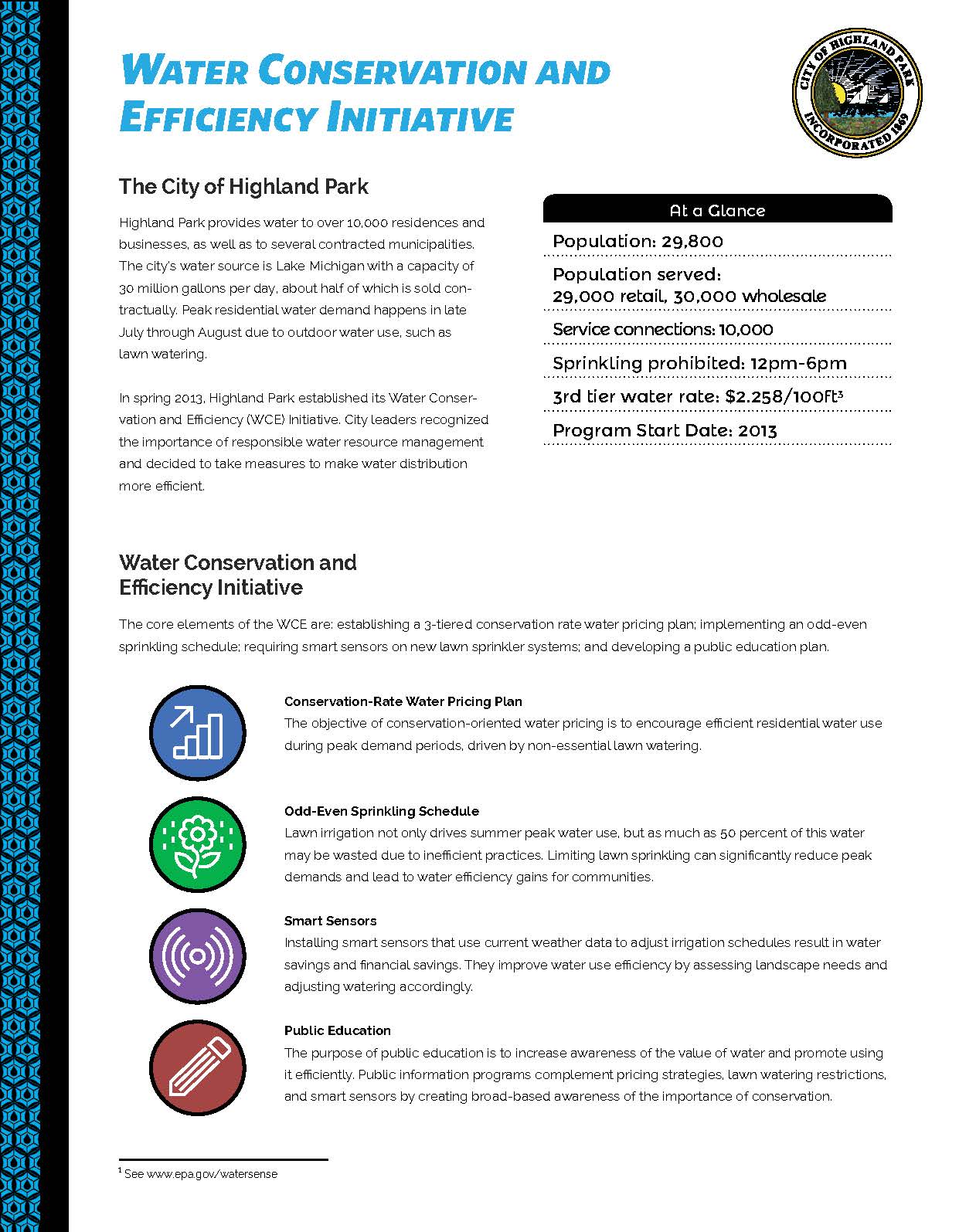
File Size: 555.25 KB
Year: 2015
Summary of City of Highland Park Water Conservation and Efficiency Initiative started in 2013

Summary of City of Highland Park Water Conservation and Efficiency Initiative started in 2013
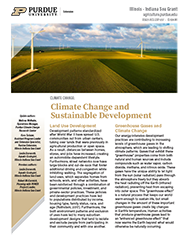
Energy-intensive development practices contribute to increasing levels of greenhouse gases in the atmosphere, which are leading to shifting climate patterns.
This document is available through the Purdue University Extension Education Store at: https://edustore.purdue.edu/id-524-w.html
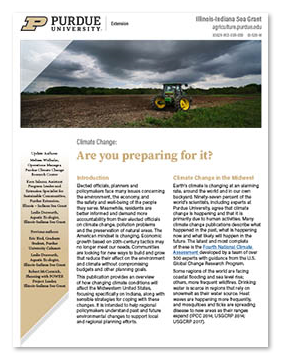
This publication provides an overview of how changing climate conditions will affect the Midwestern United States, with a specific focus on Indiana, along with sensible strategies for coping with these changes. It is intended to help regional policymakers understand past and future environmental changes to support local and regional planning efforts.
This document is available through the Purdue University Extension Education Store at https://edustore.purdue.edu/id-520-w.html.
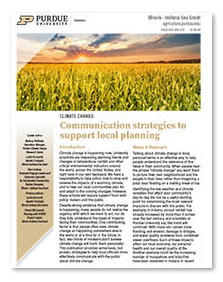
Despite strong evidence that climate change is happening, many people do not realize the urgency with which we need to act, nor do they fully understand the types of impacts facing their communities. This publication provides some basic, but proven, strategies to help local officials more effectively communicate with the public about climate change.
This file is available from the Purdue Extension EdStore at, https://edustore.purdue.edu/ID-519-W.html.
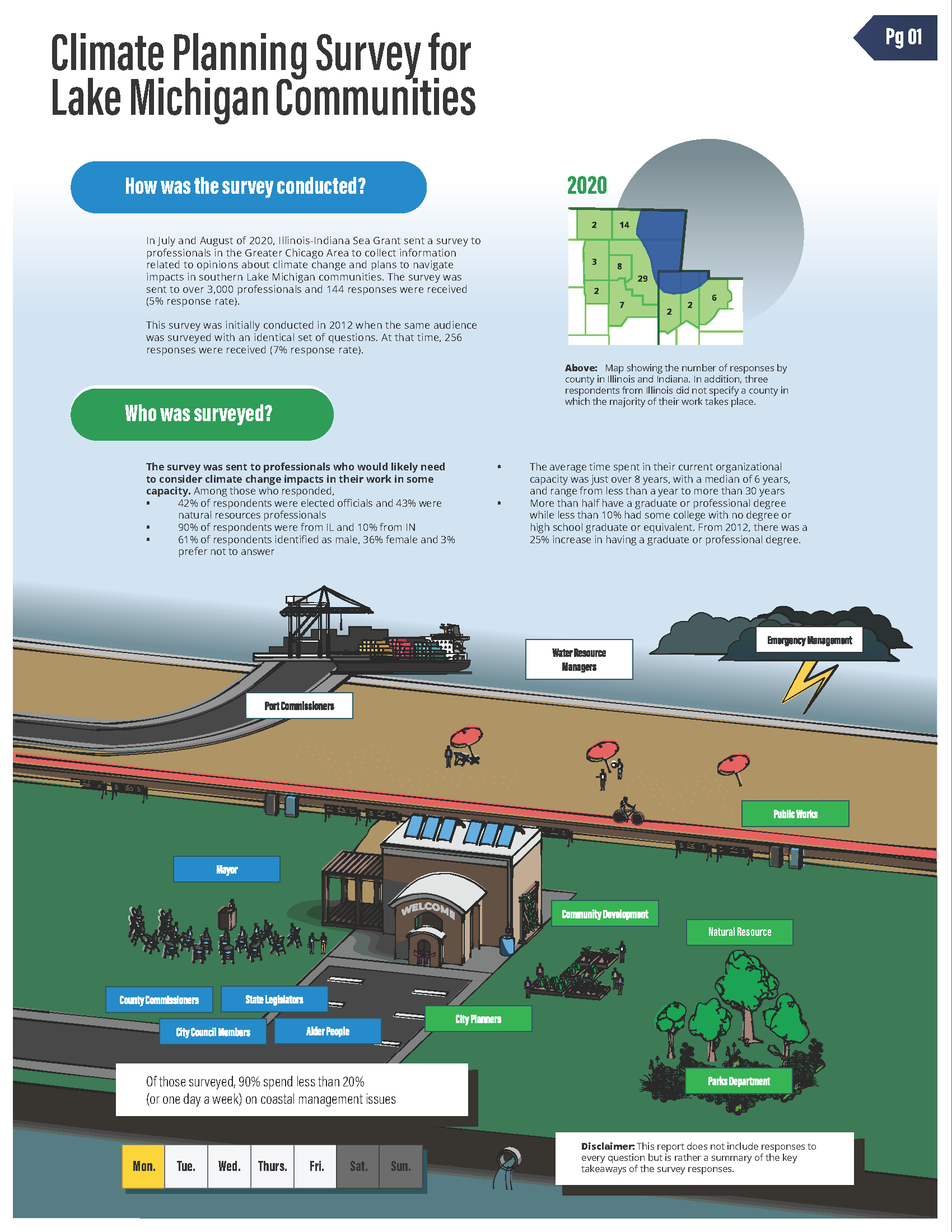
In July and August of 2020, IISG sent a survey to professionals in the Greater Chicago Area as a follow-up to the same survey conducted in 2012. This five-page fact sheet and infographic showcases the survey results.
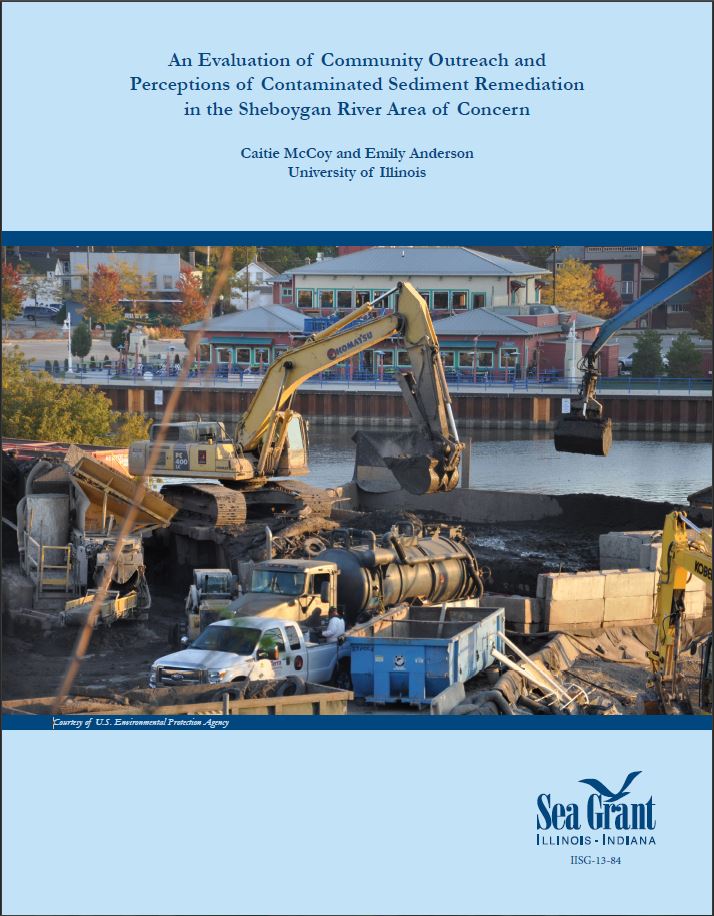
IISG conducted several interviews with local stakeholders in Sheboygan, Wisconsin to better understand community views and concerns about Sheboygan River and the river’s scheduled cleanup. This is the final report.
Note: Some older Illinois-Indiana Sea Grant publications have not yet been restructured into ADA compliant formats. We are actively working on this. If you are having difficulty accessing a particular item in one of our databases, please contact iisg@purdue.edu with the name of the item and its URL for further assistance.